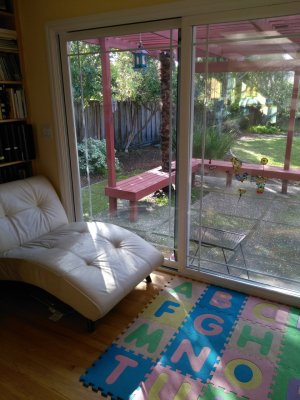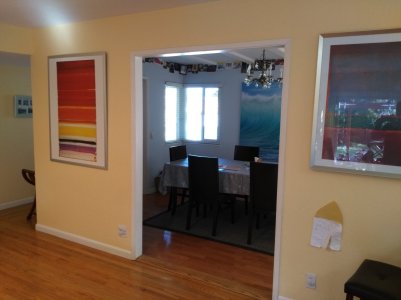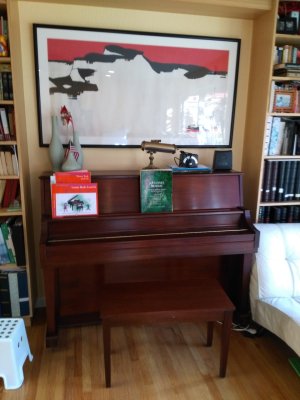- Mar 9, 2012
- 168,190
- 8,750
- 113
Like several other Ambassadors and Moderators, I was lucky enough to receive an Honor 5X from Mobile Nations and Huawei, and after about 2 weeks of non-SIM use, I thought I’d jot down a few thoughts. This is the variant with 2 GB of RAM (there’s a 3 GB version, but not sure if that’s available in the US) and 16 GB of internal storage, running 5.1.1. I’m using it SIM-free, but did test out some calls using Hangouts Dialer. I'm also using it without a microSD card.
The Good



Overall, I would say that the Honor 5X is an impressive value, combining quality build and components with excellent features not normally seen in a phone of this price. EMUI takes some getting used to, but it’s not a dealbreaker by any stretch. However, considering how important the camera has become to most users, the poor photo quality might give you pause.
The Good
- Build: This is one of the first things you’ll see and feel, and it’d be quite impressive for a $399 phone, despite the actual $199 price tag. The brushed metal has a nice texture, and is somehow less slippery than that on the Nexus 6P. Seams are tight, and there’s no hint of squeaking or flexing anywhere. The whole thing feels nice and solid, and yet quite light.
- Screen: Viewing angles are good, and the brightness range is decent. The Auto Brightness adjustment works better than on the ZenFone 2 (which never gets dark enough at night).
- Speaker: The mono speaker is loud--almost too loud. I wish the lowest volume setting was just a bit lower, in case I wanted to listen to something briefly in a quiet room without disturbing anyone else.
- Battery: Battery life is impressive, due in part to Huawei’s very aggressive RAM management (see below). But it’s difficult to give real-world stats, since I have no SIM installed, and therefore the phone is always on Airplane Mode (which tends to conserve battery).
- Fingerprint sensor: Excellent performance--on par with its cousin on the Nexus 6P. Unlock is fast, and it rarely fails to recognize my fingerprint (unless I’m touching it at an odd angle).
- Minimal bloat: Fortunately, there isn’t much Huawei bloatware. There are a few preinstalled apps that can be uninstalled (like Facebook), and I could also Disable the stock Notepad and Email apps. There are a few small feature apps like a Magnifier (that essentially uses the camera in macro mode) and a Mirror. 10.51 GB are available to the user on this 16 GB phone, which is pretty standard.
- EMUI: I actually thought I’d hate Huawei's custom launcher more, but it’s not as bad as I was expecting, and you can always install a 3rd party launcher anyway. Problems with EMUI include:
- No App Drawer, in keeping with its iOS inspiration. I like App Drawers, because I like to customize my homescreen the way I want it to look. I don’t want to create a “Junk” or “Useless” folder just to hold all of the stuff I never need to look at (and can’t disable).
- Weirdly shaped icons. The UI tries to make all icons look squares with rounded edges, which can lead to some icons (like the Gmail one) look more like it has a spare tire.
- Homescreen folders don’t display enough icons at a time--only nine per screen, which is kind of annoying considering that since there’s no App Drawer, you’ll probably have lots of apps in some folders.
- Strange placement of menu buttons in system settings/apps--they’re along the bottom, rather than at the upper right (as you’d expect with Material Design). The inconsistency can be annoying.
- Performance: A mixed bag. When waking the phone up in the morning and turning on wi-fi, things can be pretty pokey as services sync with the cloud (and also as apps start up--see below). Afterwards, it settles down, but system animations and transitions can still be a little stuttery. On the other hand, I had no problems playing games like Goat Simulator, Asphalt Nitro, or Star Wars Pinball.
- I’m always using the phone in Normal Mode under the Power Saving Menu. There are “Smart” and “Ultra” Power Saving Modes, but I’ve read that even the Smart mode leads to a significant performance hit.
- The Protected Apps option may also impact performance. On this phone, apps by default get closed out of RAM by the system when the screen is off, to prevent them from waking the phone or accessing the web while the phone is idle. Although this does help save some battery, it can also lead to some sluggishness right after waking the phone (as apps are restarted), and it can also potentially close apps that should be persisting in the background (like a music app).
- Preinstalled screen protector: For those who really want to use a screen protector, it’s nice that it comes preinstalled. But I don’t like them, since they tend to dull the screen vividness, as well as decrease the touch sensitivity (and Huawei’s is no exception). In addition, this screen protector really builds up skin oil, which doesn’t come off that easily with a microfiber cloth. Fortunately, the screen protector is easy to take off.
- Equalizer: There are EQ presets available (tested in Google Play Music), but you can’t customize your own EQ setting.
- Button placement: The Volume and Power buttons are on the right side of the phone, but the Power button is below the Volume buttons--the reverse of most other phones in the US. I found myself more than once accidentally turning the screen off instead of adjusting the volume.
- Very slow Google sync: For unclear reasons, many (if not all) Google apps seem to take much longer than usual to sync with the cloud. This is most glaringly obvious when using the Google Calendar app (not the stock Calendar)--when I switch between the several calendars I have in my account, the displayed events don’t change until I tap Menu>Refresh. On all other devices, the events change immediately after switching calendars, which is much more convenient when having to toggle quickly between them. I’ve checked to make sure background data isn’t restricted, and that the app is “Protected” by the system (see above).
- Poor camera performance: This is where the ASUS ZenFone 2 (which is one of the main competitors at this price point) is far superior. Indoor photos taken by the 5X were grainy and fuzzy, even during the daytime. Look at the photo of the piano--the print on the Brahms book is blurry, even though the ambient light was normal, and the camera was set to Auto Flash (the flash didn’t go off).



Overall, I would say that the Honor 5X is an impressive value, combining quality build and components with excellent features not normally seen in a phone of this price. EMUI takes some getting used to, but it’s not a dealbreaker by any stretch. However, considering how important the camera has become to most users, the poor photo quality might give you pause.
Last edited:


